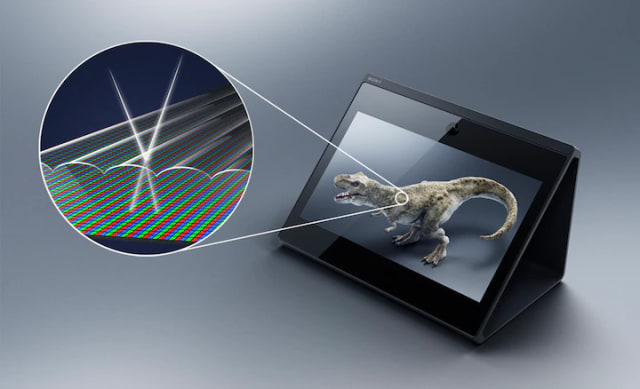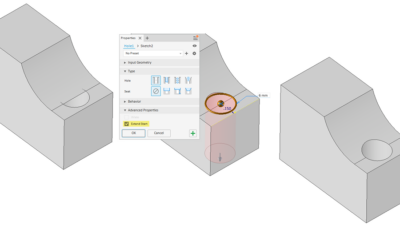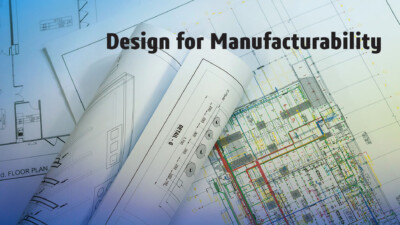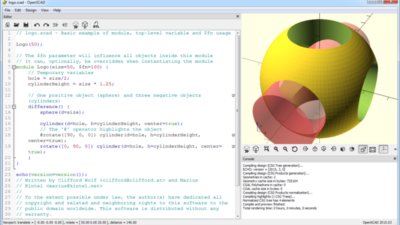New stereoscopic displays target 3D designers. Are they a gamechanger, or a gimmick?

Humans have had an on-again/off-again love affair with 3D pictures ever since the first stereoscope was invented nearly 200 years ago. The basic idea—show one image to the left eye, a slightly different one to the right, and let the brain do its binocular vision thing—has been tried with many technologies and in many settings. In Hollywood, 3D movies were big in the 1950s, and then the 80s, and then again in the 00s, often but not always requiring audiences to wear special glasses (remember those flimsy red and blue specs?). The craze peaked again a decade ago when 3D TVs were a hot item for the home and video gamers could play Mario Kart on a 3D Gameboy. Then enthusiasm waned, as it always does.
But as it always does, 3D is trying to make another comeback. Not only with novel technologies like virtual reality, but with modern takes on the old-fashioned stereoscopic display. Unlike virtual reality, which promises a fundamentally new mode of interaction, stereoscopic displays are meant to be drop-in replacements for conventional 2D displays—just like how 3D TVs were supposed to supplant normal TVs.
It didn’t work a decade ago, but some display makers are betting that 3D screens are ready to succeed. “All the pieces are finally in place for us to be able to provide a quality experience to people,” says Angela Lee, Spatial Computing Partnership and Business Development Manager at Acer, whose SpatialLabs lineup of stereoscopic displays targets not just consumers, but professional users such as 3D designers.
We tested one of these new-wave stereoscopic displays ourselves and can confirm: the technology is way better than what you’ve seen before. But is it good enough?
3D Screens For 3D Professionals
There are two main reasons that the new generation of stereoscopic displays is being marketed to 3D professionals such as CAD designers, architects, and animators. The first is simplistic, but intuitive: those working with 3D models might benefit from actually seeing those models in 3D, and stereoscopic displays offer that experience while avoiding the need for specialized eyewear (technically, glasses-free displays should be called autostereoscopic, but the prefix is commonly dropped).

Would a CAD designer really be more productive, creative, or efficient from seeing their work on a 3D screen? We posed the question to several SOLIDWORKS users, and the lack of interest was palpable. “Rotating your model creates an excellent 3D effect,” said drawoh, a user of Eng-Tips.com, an online forum for engineers (full disclosure: Eng-Tips.com is owned by engineering.com). But another user, 3DDave, pointed out a possible use case for stereoscopic displays: “3D is quite useful for tightly packed routing as even spinning the model around doesn’t give an instantaneous impression for most clearances.”
The second reason new stereoscopic displays are being marketed to professional users is because average consumers are less likely to stomach their astronomical price tag. Sony’s Spatial Reality 3D display costs $4000. Acer’s SpatialLabs View display is a more manageable $1100—but that’s just the starting price. Acer hasn’t yet disclosed the cost of the SpatialLabs View Pro model, which includes extra software for CAD designers.
“I would prefer to spend my money on a very good graphics card,” commented Eng-Tips user ctopher. Ironically, anyone buying a stereoscopic display doesn’t get a choice: a good graphics card is required. The minimum recommended specs to drive the SpatialLabs View Pro display include an NVIDIA GeForce RTX 2080 (desktop) or 3070Ti (laptop), plus an Intel Core i7 CPU. Sony’s Spatial Reality display has similar requirements.
To be fair, despite the lack of enthusiasm from CAD users, it’s hard to judge the merits of 3D displays when one hasn’t experienced them firsthand. With this technology, seeing really is believing. To that end, Acer sent engineering.com a pre-production unit of the SpatialLabs View Pro so we could see for ourselves.
Eyes On the Acer SpatialLabs View Pro
The Acer SpatialLabs View Pro is a portable 15.6-inch 4K display that achieves its stereoscopic 3D effect with a combination of a lenticular lens, eye tracking sensors, and real-time rendering algorithms. It includes an application called SpatialLabs Model Viewer that allows users to import a variety of 3D file types and view them in stereoscopic 3D.
At first glance, the effect is cool and convincing. We pulled up a sample model of an astronaut and it looked as if it was reaching out of the display. Thanks to the eye tracking cameras, you can move your head from side to side and peer at the astronaut from new angles without ever touching the mouse. You can’t stray too far from the sweet spot in the center, but the responsiveness is impressive.
It’s hard to capture on camera, but it kind of looks like this:
Despite the initial wow factor, the effect can quickly become tiring. The models occasionally look a bit blurry, as if the rendering algorithms have fallen behind or the user has moved too quickly for the eye-tracking cameras. Whenever a model passes the edges of the display—by zooming in, for instance—it’s likely to be jarring. And having too much content on screen at once is a recipe for a headache. The display we tested was a preproduction unit, so some of these issues may be resolved in the commercial release.
Even granting that, there are clear software limitations here. As it stands, designers can’t actually model in 3D; at best, they can view their models in 3D after an import/export process. Acer provides a few plug-ins to expedite this process for select 3D applications including Blender, Inventor, Fusion 360, and others. Lee says the transition takes less than ten seconds for even the most complex models, but it’s nonetheless a step removed from the premise of 3D design on a 3D screen.

We couldn’t help but have the same sequence of thoughts every time we played around with the stereoscopic display: this is cool quickly followed by okay, that’s enough. The novelty wears off quickly and your eyes will likely feel relieved to return to a normal 2D display.
Still Waiting For a Raison d’Être
So, is there anything really new to this new wave of 3D screens? Lee is right that the technology has never been better; the SpatialLabs View Pro is miles ahead of the glasses-free displays of a decade ago. But the technology has never been the issue. Lee makes an important point about 3D displays: “It’s not just about a piece of hardware, it’s about the software and content all together.”
And that remains the issue. Despite the better hardware, there’s still no compelling reason for 3D designers to use a 3D display. Even if they provide a slight benefit for certain types of 3D design work (which remains a big maybe) it’s hard to justify the drawbacks of high cost, low resolution, eye fatigue, and bloated workflows.
Where’s the killer app for 3D screens? If and when there’s a use case so persuasive that it makes up for all the downsides, 3D screens may well stick around for good. But right now, they’re a solution waiting for a problem.



